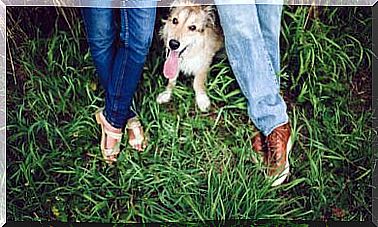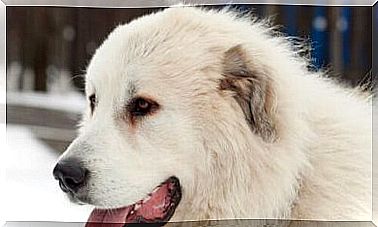Pessimism Is Also Dangerous For Dogs

A farmer wanted to have a competition between a dog and a rabbit. So he hid a bone and a carrot. While the rabbit began to dig and dig, the dog remained in place, lamenting how difficult it would be to find the bone. The rabbit was not dismayed by each new hole it made, keeping in mind that it was getting closer and closer to finding its carrot. As you can see, pessimism is a bad adviser, even for dogs.
Meanwhile, the dog continued to whine. The rabbit, when he had nowhere to dig, made a tunnel following his sense of smell. So he found not only the carrot, but the bone as well. Do you know where you were? Right under the dog! If he hadn’t been blinded by pessimism, the furry might have found his prize using a small part of his animal instincts.
This is just a story called “The Pessimistic Dog”, which shows that animals can have different moods, and can even be pessimistic. This attitude is dangerous for dogs and we’ll explain why.
Optimistic dogs versus pessimistic dogs

A study in Sydney was done to find out if there really are pessimistic dogs, and it did. For the experiment, two musical tones were used, with which around 40 dogs of different breeds were taught that, at the sound of one of the tones, they would have milk instead of water as a prize.
The sounds used were between two octaves and therefore had different tones. When the animals learned to tell them apart, the experiment began.
Some of the dogs quickly played the tone that would make them get milk. They repeated this several times, even though they didn’t receive the award on the first attempt.
These were considered optimistic dogs, as they were confident that if they kept pushing, they would get more milk. However, other dogs, seeing that milk did not arrive after the first attempt, gave up. Researchers considered these animals to be pessimistic.
According to one of the researchers, “pessimistic dogs seemed more stressed by their failures than optimists. They complained and couldn’t keep pace, avoiding trying again. Meanwhile, the optimists were persistent and kept trying.”
Scientists, however, do not believe that pessimistic dogs are unhappy, but that they are more used to a more comfortable routine, which they do not want to get out of. But they emphasize the importance of motivating them to do new things.
Pessimism or realism?
When someone calls our attention for some pessimistic words we have said, maybe our answer is: “I’m not a pessimist, I’m a realist”. Does this happen to our dogs too?
Another study, carried out by Marck Bekoff and based on the research we talk about in this article, concluded that perhaps the dogs that stopped fetching milk were not pessimistic but realistic, and they realized that they couldn’t.
A dog with a diagnosed pessimistic pathology does not show interest in any activity, even when it involves some kind of reward. Therefore, Bekoff does not deny that there are pessimistic dogs. On the contrary, he claims that they exist, especially if they were victims of abuse from an early age. However, this type of behavior can be changed.
How does a pessimistic dog behave?

A pessimistic dog can look a lot like a depressive, and has some attitudes, such as:
- oversleep
- lying down for long periods
- staring into space
- unwilling to play
- Does not respond to stimuli
These are some of the signs that a dog is pessimistic. While there are studies that indicate they are not unhappy, the truth is, they could be even happier. A pessimistic animal does not enjoy life and the love that others have for him. Therefore, it is essential to motivate him to do new things and live new experiences. If you don’t know how, it might be a good idea to take him to a trainer or a dog psychologist.









